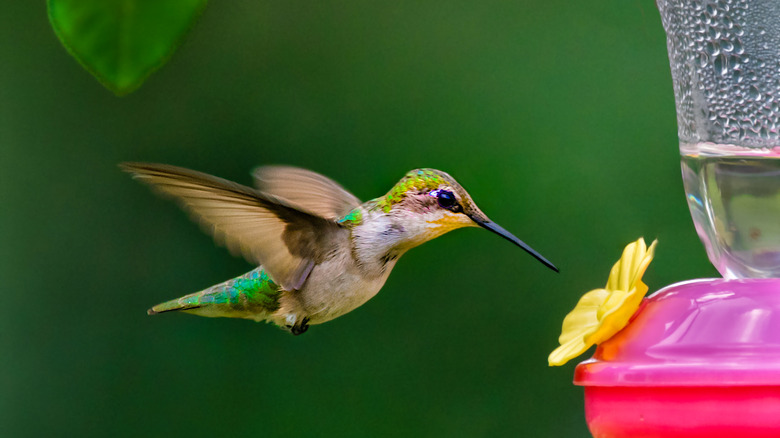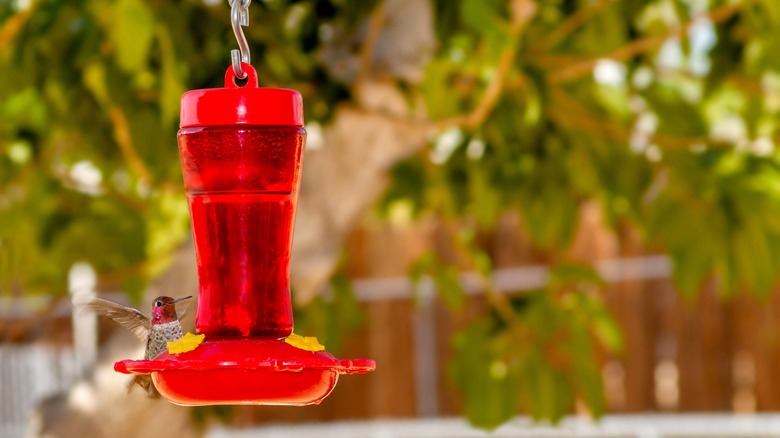The Best Ways To Keep Your Hummingbird Feeder From Leaking
Hummingbirds bring such joy with their iridescent feathers and impossibly cool mid-air hovering. If you're a birder, you'll want to attract more hummingbirds and give them a reliable source of food so you can enjoy the magic of their company. Positioning the feeder in the right spot and keeping the sugar water fresh will keep them coming back year after year. While purchasing the right unit is sometimes key to keeping your hummingbird feeder from spilling nectar (spoiler alert: consider upgrading to one that's saucer-shaped), we recommend you be an attentive hummingbird parent by regularly engaging in five specific maintenance tips that will keep it from leaking. It's better not to set and forget your feeder, but rather take an active weekly role in its maintenance.
You don't want a leaky hummingbird feeder for a couple of reasons — for one, pools of sugar water will attract bees and ants. Also, if it's leaking, you're losing the nectar the birds should be drinking. If you've spotted leaks, it could mean that the seals have become loose or damaged.
Several ways to keep your hummingbird feeder from leaking
To prevent leaks, it's a good idea to inspect your feeder regularly. First, temporarily pour the sugar water into another container. Then, make sure that your feeder is assembled properly, that all parts are securely attached, and that ports and reservoirs are free of any damage. You should also clean out the feeder on a weekly basis (twice weekly in hot weather) since crystals can form from the sugar water, blocking the ports. Use warm water only, no soap, and pipe cleaners or small brushes. You might designate a clean toothbrush just for this job! Keep your eye on depleted solution levels and keep it filled, because drips can signal that it's running low.
Monitor where your feeder is positioned as its location might be contributing to leaks. If it's sitting in direct sunlight for most of the day and made primarily from plastic, the feeder might expand and contract which can cause dripping. Also, ask yourself if its current location is windy and gusty. If yes, re-position the feeder in a shady spot that's protected from wind gusts and take the feeder down during inclement weather. Finally, our last tip will only apply to those who own feeders with removable perches: Thanks to a hummingbird's capacity to flap its wings up to 5,400 times a minute, it hovers while drinking and doesn't need perches. We recommended taking them off because other large birds land on them, tipping the feeder and creating spills.

